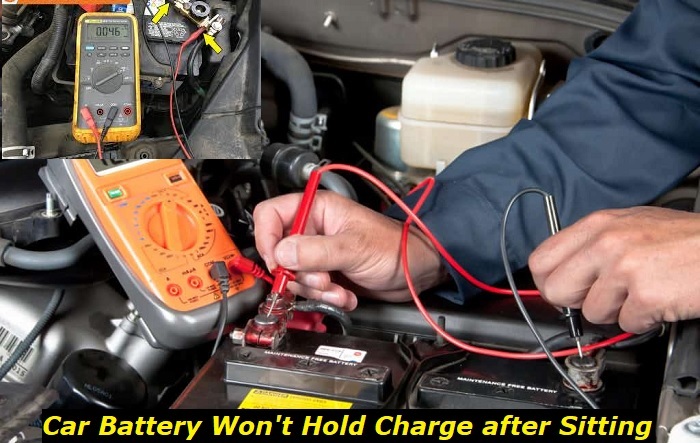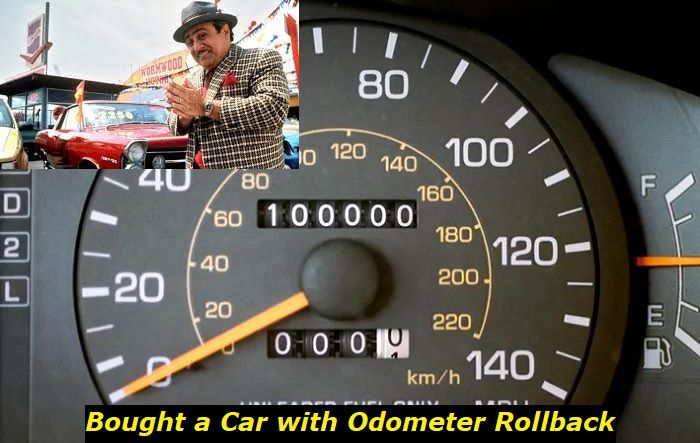If your car battery sat idle for any prolonged periods, it shouldn't surprise you if it isn't up to the task the next time you attempt to start your car. The next natural step would be to try jumpstarting or trickle-charging it. Surprise, surprise! These tried and tested home remedies are not working either. That is why you are here, to find the next logical step.
Dead car battery highlights
- Average lifespan:4 - 5 years
- Voltage range:less than 10 volts
- Symptoms:no crank, no lights
- Reasons:complete discharge, age, hard use
- Prevention:regular charging
- DIY fix:possible
- How much to fix?$0 - $250

Why Your Car Battery Won't Hold Charge After Sitting
Your car battery relies on ancient lead-acid technology to power your engine and electrical accessories. The startling, lighting, and ignition battery likely has a lifespan of about five years. Unfortunately, this lifespan shortens drastically when drivers fail to adhere to the manufacturer's maintenance directions.
One of these crucial maintenance tasks is to disconnect and store your car's battery whenever you expect it to remain parked for long periods. Parking your car with the battery still connected causes it to discharge over time.
Additionally, the terminals may suffer corrosion which will affect their conductivity. As a combination of factors causes your battery to lose its capacity to hold a charge, it undergoes a process known as capacity fade.
The leading causes of car batteries failing to hold a charge after sitting for some time include:
- Sulfation happens after your discharged battery sits for so long that the plates in your storm get covered by sulfate crystals.
- Corrosion affects the conductivity between your terminals and cables.
- Exposure to extremely hot or cold temperatures
- Old age makes the battery predisposed to sulfation after shorter periods of discharge.
What Next After Discovering Your Battery Won't Hold Charge?
Considering jumpstarting and trickle charge did not revive your battery, there is a good chance that it is dead. If it isn't dead, we will walk you through some tests that will help you figure out the best way to fix it.
Test Whether Your Battery is Dead
Your first order of business is to ensure that the battery still has some life in it. You can remove your battery and take it to an autobody shop for testing. If you had rather do it at home, all you need is a $10 multimeter to get the job done.
Set your multimeter within the fifteen to twenty-volt range, and pop your hood.
a) Resting Voltage
With your car turned off, connect the red probe to the positive battery terminal and the black one to the negative terminal. An approximate reading of 12.6 volts means your battery is likely in operable condition. Any reading below 12.2 volts means that your battery's resting voltage is weak. Depending on the extent of deterioration, a weak battery may need to be charged to be replaced.
b) Crank Cycle Voltage
After testing your battery's resting voltage, turn your attention to its crank cycle setting. You will need a second pair of hands to turn the ignition as you check the reading. When the car turns on, you should notice the reading momentarily drop. The value should not dip below 10 volts because this indicated insufficient turnover power. Such a battery is prone to fail without notice. The problem could be fixed by recharge or replacement.
c) Idling Voltage
After the initial dip, your car will idle and draw a steady amount of power from the battery and display a reading between 14 volts and 14.5 volts. An idle reading of below 14 volts proves that your battery is too unreliable and weak to keep the motor rotor. It could also mean that your alternator is defective and not effectively playing its crucial twin roles; charging the battery when the car running and feeding your electrical system (e.g. radio and headlights) with energy.
d) Alternator Test
This test will ensure you do not unfairly convict your battery for the alternator's shortcomings. When testing the alternator, you will need to maximize the load on your battery by switching on all your electrical equipment. Blast the AC, stereo, headlight, and interior lighting. Once the voltage load is maximized your battery should not fall beneath 13.5 volts.
A lower reading indicates that your alternator is letting the battery and electric system down and should likely be replaced. Do not jump the gun and replace your alternator without consulting a licensed and insured mechanic.
How to Fix a Car Battery that Fails to Hold Charge After Sitting
Assuming your battery passes the tests above, you can go ahead and get some protective gear to begin the healing process.
a) Safety first
Put on a pair of thick rubber gloves and protective eye goggles because even the tiniest drop of battery acid can do some real damage.
b) Clean your battery terminals
For this step, you will need petroleum jelly, baking soda, anti-corrosion pads, wire brush, water, and shop towels. After gathering everything, follow these steps:
- Ensure your vehicle is turned off. Pop the hood and disconnect the negative cable which is usually black. Next, disconnect the positive/red cable.
- Inspect the battery and cables to determine the extent of the corrosion. Ensure your cables are free of any cracking or fraying that may affect the quality of your connection. Check that your battery isn't cracked, bloated or swollen; if it is, you will need to replace it as soon as possible. Do not reconnect it to the vehicle.
- Coat the corrosion on your battery terminals with baking soda. Use the wire brush and minute amounts of water to scrub away the corrosion. If you do not have a wire brush, you can substitute using an old toothbrush. Just be ready to supply copious amounts of elbow grease. If you tend to be clumsy with water, it is best to mix the baking soda and water into a thick paste and use this to scrub. Once the corrosion has given way, wipe off the baking soda using a moist shop cloth. Use a dry shop cloth to ensure the battery is thoroughly dry. If available, an air compressor would also dry the battery in a snap.
- Use the process above to clean any corrosion on your battery
- Next use battery terminal protectors (anticorrosive pads) to ensure the corrosion does not rear its ugly head soon. Applying a thick layer of petroleum jelly on the terminals has the double benefits of improving conduction and reducing corrosion.
- Reconnect your battery cables in the reverse disconnecting order. This means you first connect the red i.e. positive cable and the black/negative cable last. Adding some petroleum jelly during this step is also recommended.
c) Test your Terminals
Now that the corrosion is no longer a factor, retest your battery voltages when the vehicle is in different conditions. Attach the voltmeter to the positive terminal and then the negative. If any of the terminals reads lower than two volts add battery fluid to the cell. Replace your cell covers and connect the battery to a trickle charger for about 24 hours.
d) Test the Battery Fluid Using a Hydrometer
Testing your battery's electrolyte using a hydrometer is a very dangerous procedure that cannot be undertaken lightly. Not only do you need serious protective gear - we mean the works: steel-toed boots, rubber apron, rubber gloves, and eye goggles.
On top of this, you have to ensure you use the right hydrometer because purchasing the wrong type (one with metal) could result in an explosion. We can agree no one wants to go out in such an epic and embarrassing fail.
Further, performing a hydrometer test involves more math (when calculating the specific gravity of the electrolyte) than the average person is comfortable taking on
If you want to perform a simple hydrometer test nonetheless here is how to. Use the hydrometer to carefully draw the electrolyte. If your electrolyte has changed color to grey or brown, this is a definitive sign that you should replace it. A battery that is in good shape should have white or green electrolytes.
e) Replacing Your Battery
If your battery is older than four years or is failing the tests above, it may be easiest to give in and replace it. You can have the battery replaced by a professional mechanic or you can opt to DIY.
Conclusion
When you discover that your car battery is no longer holding charge after sitting for a while, there is a slim chance of fixing the problem without having to replace it. However, once you fix the problem, it is important to ensure that you adhere to maintenance instructions to avoid facing the problem. With the right maintenance, your battery should live beyond its five-year lifespan without ever troubling you.
About the authors
The CarAraC research team is composed of seasoned auto mechanics and automotive industry professionals, including individuals with advanced degrees and certifications in their field. Our team members boast prestigious credentials, reflecting their extensive knowledge and skills. These qualifications include: IMI: Institute of the Motor Industry, ASE-Certified Master Automobile Technicians; Coventry University, Graduate of MA in Automotive Journalism; Politecnico di Torino, Italy, MS Automotive Engineering; Ss. Cyril and Methodius University in Skopje, Mechanical University in Skopje; TOC Automotive College; DHA Suffa University, Department of Mechanical Engineering






Add comment